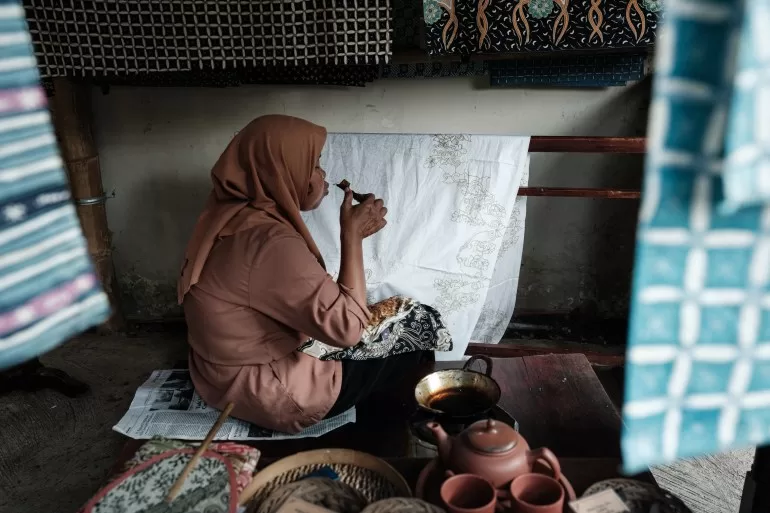Solo, Indonesia – Gunawan Setiawan is the fourth generation of batik makers and sellers in his family, and hails from the historic royal city of Surakarta, or Solo, in Central Java which is also known as the batik capital of Indonesia.
“Batik is a special art from Indonesia, and especially Java, which is made with wax and dye,” Setiawan said. “Originally, sticky rice was used as a way of carving out the designs and making them resistant to the coloured dye, before wax was chosen as a more effective replacement.”
While the exact origins of the technique are difficult to determine, batik is thought to date back to ancient times when people wrapped cloth around themselves as clothing and started to dye it different colours and decorate it with motifs, Setiawan said.
Batik is thought to have originated in Indonesia but similar techniques are also found in Egypt, Malaysia, Sri Lanka, India and parts of China.
“The colours of Solo’s batik reflect the environment and in Java, we are surrounded by trees and leaves. Each part of Indonesia has its own colours and in Solo, they are brown, beige and gold,” Setiawan said.
“The colours of Solo’s batik are very calm.”
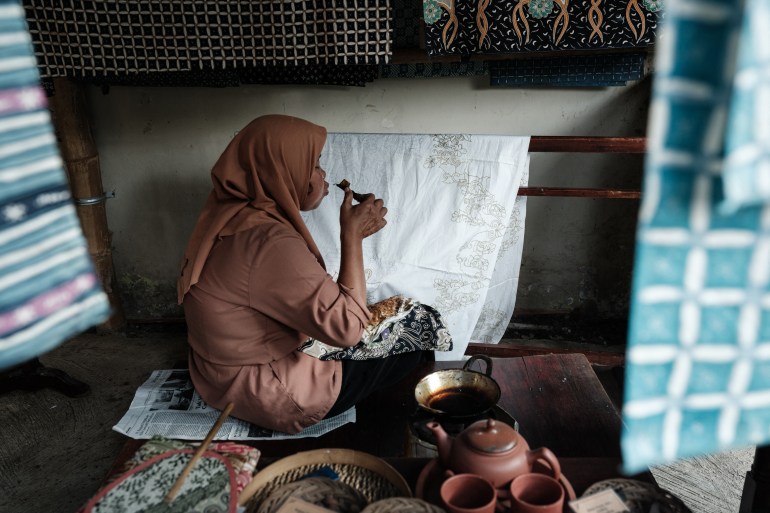
Solo is not the only place where the batik reflects the environment. Communities close to the sea tend to use blues and greens, Setiawan said, while those close to active volcanoes use reds and oranges.
“Batik has a name, a function, a meaning and a philosophy and there is always a specific reason or occasion to wear it. You can’t wear batik randomly,” Setiawan said.
With that in mind, there is a particular batik design for pregnant women, women who have just given birth, babies learning to walk, weddings, funerals and even when someone has been promoted.
Changing times
But while batik has been produced in Indonesia for centuries, it is now facing a struggle to keep up with the times.
Alpha Febela Priyatmono is a batik expert in Solo. She says the art of batik needs to be understood in a wider context than just textiles.
“People need to know what batik is, which is the process of dyeing something using wax to make the design,” he told Al Jazeera. “Batik is not just for cloth designs but can also be used on ceramics, wood and leather but it needs to be a wax design made from melting wax until it is liquid.”
He added that some modern designs used a chemical compound to break down the wax before printing the cloth and could not be classified as batik because they deviated from the traditional process.
“Young people and the wider public must support batik but not just from an economic point of view, but also from an artistic, cultural and philosophical perspective, because that is the strength of batik,” he said.
“The challenges to the market now are quite severe but we have to find a way around them. We tend to lose out on price to imported textiles so we need to teach the public what is and isn’t true batik and teach them to love real batik products.”
To educate the public, Priyatmono has a range of programmes including teaching young people about batik through simpler and less complicated motifs. There is also an option that uses environmentally friendly wax and fabric, as well as natural dyes to make the batik.
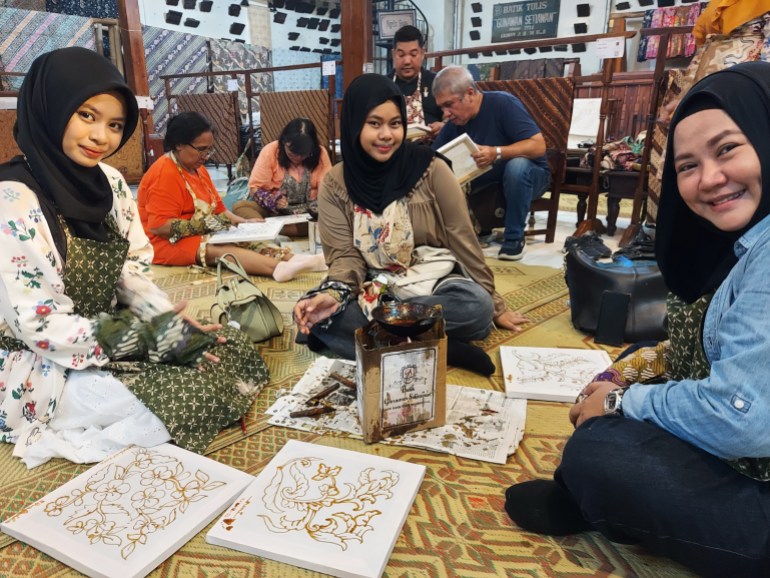
In operation since 1546, Solo’s Kampung Batik Laweyan is one of the city’s main hubs for batik.
The area has seen its fortunes rise and fall.
From being home to hundreds of batik makers and sellers at its peak, a slump in demand in the 1970s and the COVID-19 pandemic both hit Laweyan badly.
Now, however, Priyatmono says there has been a revival, with about 40 to 50 sellers established in the area.
“But there is still a high risk to the local textile market in Indonesia, so we still need to nurture and grow the industry,” he said.
For his part, Setiawan says the outlook for batik is promising.
“I am very optimistic that the government will continue to promote Indonesian batik so that it can also be well-known internationally. I want it to be a worldwide trend,” he said.
Indonesia has long given batik clothing and products to visiting dignitaries. At last year’s summits of the Association of Southeast Asian Nations (ASEAN), leaders were pictured greeting President Joko Widodo wearing batik. Asia Pacific Economic Cooperation (APEC) leaders also wore them when they met in Indonesia in 2013.
Some Indonesian public figures are also known as regular batik wearers at home and overseas – including vice president-elect and former mayor of Solo, Gibran Rakabuming Raka, and the minister for tourism, Sandiaga Uno.
Indonesia’s version of “casual Friday” also sees civil servants and office workers wearing batik and the country celebrates National Batik Day on October 2 every year.
A new generation
As in Setiawan’s family, batik businesses are usually handed down from generation to generation, but younger generations in Indonesia sometimes lack enthusiasm for the business which can be laborious and where profits tend to fluctuate.
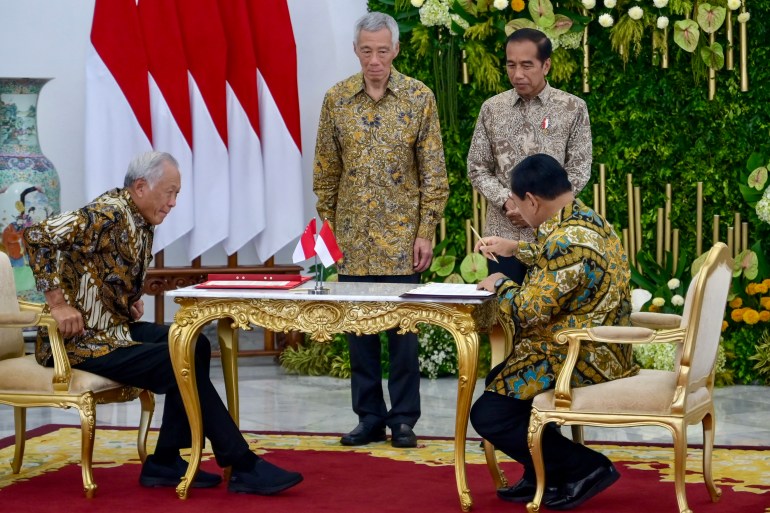
Solo journalist, Syifaul Arifin, comes from a family of batik sellers and said that while he regularly wears batik, he did not want to work in the family business.
“My father made beautiful sarongs but when I grew up, I wanted to be a journalist rather than make batik,” he said. “I feel bad about that now. When my father died, all that knowledge died with him.”
Setiawan said the decline of family businesses was all too common and that his workshops at Kampung Batik Kauman, another of Solo’s batik centres, were an effort to revive younger people’s interest in the craft.
At his shop, visitors to Solo sit cross-legged on the floor around wax burners and try their hand at their own batik designs, drawing them on the white cloth with wax before they are plunged into the dye.
Rizka, a 19-year-old tourist and arts student, who like many Indonesians goes by one name, said she had signed up for the class to “learn something new”.
Around her were other local and international visitors diligently painting their designs from the buckets of melted wax on the free-standing burners around the room.
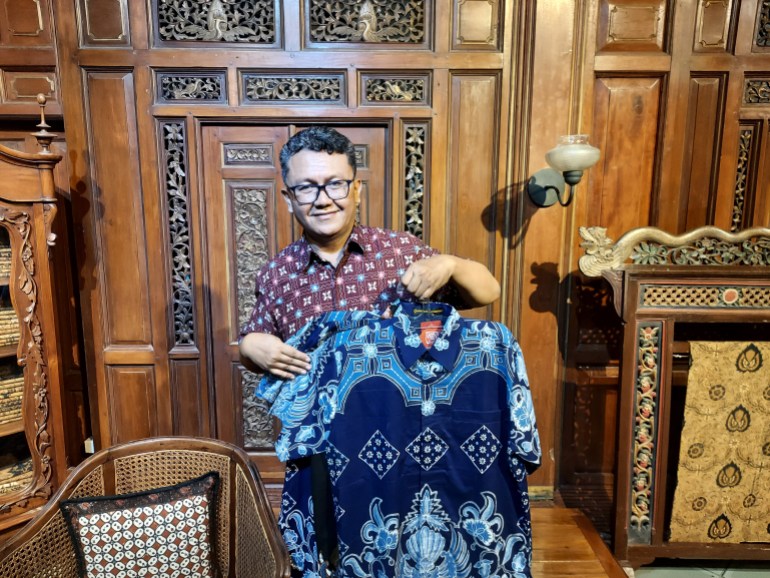
Rizka, who is at university in Surabaya, said that she was interested in all Indonesian art forms and that it was important to understand Indonesia’s creative history.
“Batik is so interesting because it can change with the times and be up to date even though it is seen in Indonesian as an ancient craft,” she said.
“But it depends on us to take care of it.”
